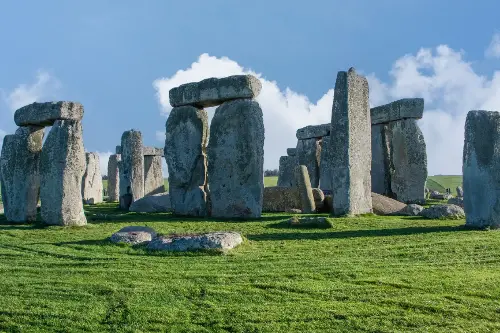Stonehenge, the emblematic prehistoric monument located in the Wiltshire countryside, has long captivated historians with its majestic stone circles and the enduring mystery of its origins. But recent archaeological finds at this UNESCO World Heritage Site are adding new layers to our understanding of this ancient wonder, revealing glimpses into the lives of those who engineered it and the society they inhabited.
The discoveries, made during a series of detailed excavations and surveys, showcase that Stonehenge was only a part of a sophisticated network of Neolithic and Bronze Age monuments. This interconnected landscape offers us substantial evidence to suggest that the area served both ceremonial and funerary purposes.
One of the most significant recent findings is the discovery of a circle of deep shafts located just two miles away from Stonehenge. Each more than 10 meters in diameter and 5 meters deep, these shafts form a 1.2-mile-wide circle and date back to more than 4,500 years ago. Researchers suggest that they could have served as a boundary for a sacred area connected to the henge. This monumental pattern of structures, aligned with the solar and lunar movements, transforms our traditional understanding of the dimension and complexity of the site.
Furthermore, detailed analysis of the remains discovered around Stonehenge has brought another dimension to our knowledge of the people who built it. Recent isotopic analyses of the bones found in the area indicate that some of the individuals were settlers who originated from as far away as Wales. The same region that gifted Stonehenge its smaller bluestones – an intriguing correlation that hints at the extensive trade and travel networks of the period, as well as potential ancestral links or cultural exchanges.
Another fascinating finding from the nearby Durrington Walls site, believed to be the ‘builders camp’ for Stonehenge, is the evidence of large-scale feasting and domestication practices. Thousands of animal bones unearthed bear the marks of seasonal slaughtering, suggesting that people gathered there for feasting activities tied to solstices or other celestial events.
Archaeologists have also employed cutting-edge technologies such as ground-penetrating radar and remote sensing techniques. This non-invasive approach led to the identification of previously undetected pits and mounds, providing hints about the ceremonial and burial practices of the time, including stages of foreign and intricate cultural influences.
The enigma of Stonehenge’s construction also edges closer to resolution with technological advances. New theories propose that the stones were transported overland, rather than by sea, challenging longstanding assumptions. Theories of construction have evolved too, with experiments in moving and raising large stones using Neolithic technology showing that communities of the time would have been capable of orchestrating the feat with enough manpower and ingenuity.
These revelations resonate among historians and enthusiasts alike, offering a richer narrative to Stonehenge’s past. Pieces of the puzzle that have confounded experts for centuries are coming together, challenging preconceived notions and deepening our appreciation for the capabilities and complexities of ancient societies. The ongoing excavation projects and research endeavours promise to peel back more layers of history, inching closer to deciphering the full story behind this magnificent monument.
As historians and archaeologists continue to unravel the secrets of Stonehenge, each discovery plays a critical role in enriching our understanding not only of this iconic landmark but of the broader tapestry of human history. With further investigations planned and an open-minded approach to the new data, the full story of Stonehenge awaits to be told, perpetually redefining our connection with our distant ancestors.

